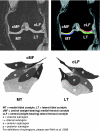Exercise and osteoarthritis
- PMID: 19207981
- PMCID: PMC2667877
- DOI: 10.1111/j.1469-7580.2008.01013.x
Exercise and osteoarthritis
Abstract
Exercise remains an extremely popular leisure time activity in many countries throughout the western world. It is widely promoted in the lay press as having salutory benefits for weight control, disease management advantages for cardiovascular disease and diabetes, in addition to improving psychological well-being amongst an array of other benefits. In contrast, however, the lay press and community perception is also that exercise is potentially deleterious to one's joints. The purpose of this review is to consider what osteoarthritis (OA) is and provide an overview of the epidemiology of OA focusing on validated risk factors for its development. In particular the role of both exercise and occupational activity in OA will be described as well as the role of exercise to the joints' tissues (particularly cartilage) and the role of exercise in disease management. Despite the common misconception that exercise is deleterious to one's joints, in the absence of joint injury there is no evidence to support this notion. Rather it would appear that exercise has positive salutory benefits for joint tissues in addition to its other health benefits.
Figures



References
-
- American Geriatrics Society Panel on Exercise and Osteoarthritis Work group recommendations: 2002 Exercise and Physical Activity Conference, St. Louis, Missouri. Session V: evidence of benefit of exercise and physical activity in arthritis. Arthritis Rheum. 2003;49:453–454. - PubMed
-
- American Geriatrics Society Panel on Exercise and Osteoarthritis Exercise prescription for older adults with osteoarthritis pain: consensus practice recommendations. A supplement to the AGS Clinical Practice Guidelines on the management of chronic pain in older adults. [Erratum appears in J Am Geriatr Soc 2001 Oct; 49: 1400] J Am Geriatr Soc. 2001;49:808–823. - PubMed
-
- Andriacchi TP, Briant PL, Bevill SL, et al. Rotational changes at the knee after ACL injury cause cartilage thinning. Clin Orthop Relat Res. 2006;442:39–44. - PubMed
-
- Armstrong AL, Hunter JB, Davis TR. The prevalence of degenerative arthritis of the base of the thumb in post-menopausal women. J Hand Surg Br. 1994;19(3):340–341. - PubMed
-
- Badley E, DesMeules M. Arthritis in Canada: an Ongoing Challenge. Ottawa: Health Canada; 2003.

